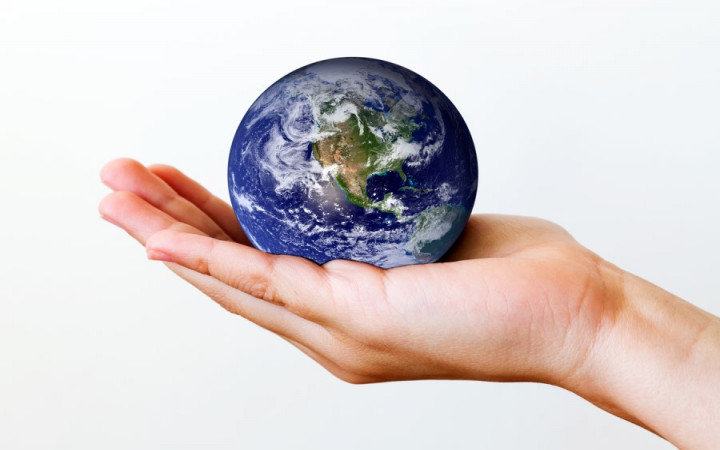Today’s Wonder of the Day was inspired by Sonika from stone ridge, VA. Sonika Wonders, “Why are planets spherical and not cuboid or any other shape.” Thanks for WONDERing with us, Sonika!
There are a few basic astronomy facts you probably take for granted. For example, Earth is round and Earth travels around the Sun. However, have you ever considered how revolutionary those ideas really are?
Take a walk outside to prove the point. Does it seem like you're walking on a giant, round ball? Do you feel yourself flying through the air around the Sun? No! Based upon your senses, would you guess that Earth is round? Does it seem like you're traveling around the Sun instead of the other way around?
Hundreds of years ago, people believed Earth was flat and that the Sun traveled around Earth. We now know different, but were those views really all that crazy back then? Probably not! The evolution of scientific knowledge has proven that, when it comes to astronomy, you can't always rely on your senses.
We already know that Earth is round. But why is it round? And is it perfectly round like a rubber ball? Let's see what science can tell us about the answers to those questions.
Two features of Earth that determine its shape are mass and gravity. These features are, in fact, . Mass attracts other mass, resulting in the force we call gravity. Smaller objects, such as a car or a house, have tiny gravitational forces. The amount of mass throughout Earth, however, is huge and really adds up.
Scientists theorize that about 4.6 billion years ago, the solar system was a cloud of dust and gas. As gravity pulled the matter in on itself, it began to spin and clump up, forming the sun, planets, moons, and other space objects. Earth's rocky core was the first part of our planet to form, with dense matter sinking to the center and binding together. Then lighter pieces gathered and formed Earth's crust.
As Earth's mass added up from all this matter and gravitational forces increased, the matter attempted to take the most efficient shape possible: a sphere. If Earth was a cube, its corners would be farther away from its center than other points. Because gravity acts equally on everything, the corners would need to be pulled closer to the center.
The result of evening out the uneven places is that you end up with a shape in which every point on the surface is the same distance from the center. The only shape that fits that definition is the sphere. So, gravity is the answer to why Earth is round!
If you've seen pictures of asteroids that exist in outer space, you may have noticed that some of them are irregular, rocky shapes. That's because they're not big enough to pull themselves into a sphere. If they continue to grow and gain mass, eventually they, too, will form themselves into a sphere. Astronomers have made that ability — the ability to form into a sphere — as one of the requirements to be considered a planet!
If you've seen pictures of Earth from space, Earth does indeed look like a perfectly-round ball. Astronauts have even nicknamed it the “Blue Marble." Scientists will tell you, however, that Earth is not perfectly round. Its true shape is closer to that of an ellipsoid.
Earth's constant rotation creates centrifugal forces that make Earth wider at the equator than the poles. How much wider? About 70,000 feet wider! You've probably also noticed that Earth's surface isn't flat. High mountain ranges and deep ocean trenches also contribute to Earth's slightly-irregular shape.
Earth's shape is also not static. It's always changing. Sometimes these changes are regular, such as daily tides that affect the oceans and Earth's crust. Other changes are irregular and extremely slow, such as the movement of Earth's tectonic plates. Sometimes natural disasters can result in sudden changes, such as is the case with earthquakes, volcanic eruptions, and meteor strikes.
There's actually a field of science dedicated to measuring and monitoring Earth's size and shape. It's called geodesy, and scientists with the National Geodetic Survey keep an eye on Earth's ever-changing shape and size.




